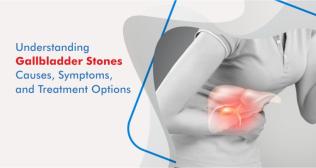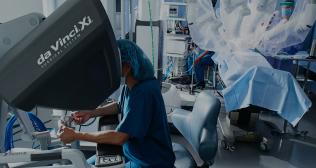
Robotic Surgery: Benefits for Patients
Surgical innovation has come a long way, and robotic surgery is at the forefront of this transformation. This cutting-edge technique combines the skill of experienced surgeons with advanced robotic technology, offering unmatched precision, control, and versatility. Robotic-assisted surgery is a form of minimally invasive surgery, involving smaller incisions, less pain, and faster recovery compared to traditional open surgery.
How Robotic Surgery Works
In robotic-assisted surgery, the surgeon operates from a console equipped with high-definition 3D vision and controls robotic arms. These robotic arms translate the surgeon’s hand movements into precise surgical actions inside the patient’s body, filtering out tremors and allowing access to hard-to-reach areas. The technology significantly enhances dexterity and provides a superior view of the surgical site, improving surgical outcomes.
Key Benefits of Robotic Surgery for Patients
Patients undergoing robotic procedures often experience:
- Enhanced Precision and Control: Robotic arms can rotate and bend beyond human capability, enabling complex maneuvers with millimetric accuracy.
- Minimally Invasive: Smaller incisions lead to less trauma, reduced blood loss, and shorter healing time.
- Shorter Hospital Stay: Many patients are discharged within 24–48 hours after surgery.
- Faster Recovery Time: Reduced pain and quicker mobility contribute to a smoother postoperative journey.
- Lower Risk of Infection: Smaller wounds significantly decrease infection risk.
- Minimal Scarring: Cosmetic benefits are a key advantage, especially in abdominal and pelvic procedures.
Applications of Robotic Surgery Across Specialties
Robotic surgery is now widely used across various fields, including:
- Urology (e.g., robotic prostatectomy)
- Gynecology (e.g., hysterectomy, myomectomy)
- Cardiothoracic surgery (e.g., mitral valve repair)
- General and GI surgery (e.g., hernia repair, fundoplication, colectomy)
Robotic Surgery in Gastrointestinal (GI) Procedures
Robotic surgery in GI conditions is especially useful for procedures involving delicate anatomy. Common applications include:
- Colon and rectal cancer
- GERD (gastroesophageal reflux disease)
- Gallbladder removal
- Bariatric (weight-loss) surgery
The precision of robotic instruments allows surgeons to achieve cleaner margins and minimize complications — a crucial factor in cancer surgeries.
Who Can Have Robotic Surgery?
Most patients eligible for laparoscopic surgery are also candidates for robotic-assisted surgery. However, suitability depends on:
- Medical history
- Age and weight
- Severity or complexity of the condition
A certified robotic surgeon will conduct a full evaluation to determine if this is the right option.
Is Robotic Surgery Safe?
Yes. Robotic surgery safety is ensured through redundant systems and fail-safes. Only highly trained surgeons operate these systems, and the risk of complications is often lower than with traditional open surgery. System failures are rare and backup protocols are in place for emergencies.
Patient Experience and Recovery Outcomes
Patients often report:
- Less postoperative pain
- Quicker return to normal activities or work
- Better long-term outcomes
- Improved emotional and psychological well-being after surgery
In cancer cases, the precision of robotic-assisted procedures often improves survival by reducing the risk of incomplete resections.
Limitations and Considerations
While robotic surgery has many advantages, it isn’t suitable for everyone. Considerations include:
- Cost and insurance coverage
- Availability of robotic systems at your local hospital
- Surgeon experience
Despite the investment, robotic surgery often results in lower long-term healthcare costs due to fewer complications and faster recovery.
Conclusion
Robotic surgery is redefining the future of minimally invasive procedures. With its precision, safety, and superior patient outcomes, it is a powerful option for various conditions, especially in gastrointestinal, urologic, and gynecologic surgery. Patients considering surgery should consult a certified robotic surgeon to explore if this innovative approach is suitable for them.
As technology continues to evolve, robotic systems will become even more accessible, making advanced, effective surgical care a reality for more patients worldwide.
Categories
Clear allMeet the doctor

- General Surgery | General Surgery | General and Laparoscopic Surgery | General and Minimal Access Surgery | Robotic Surgery
-
20 Years
-
1100



















